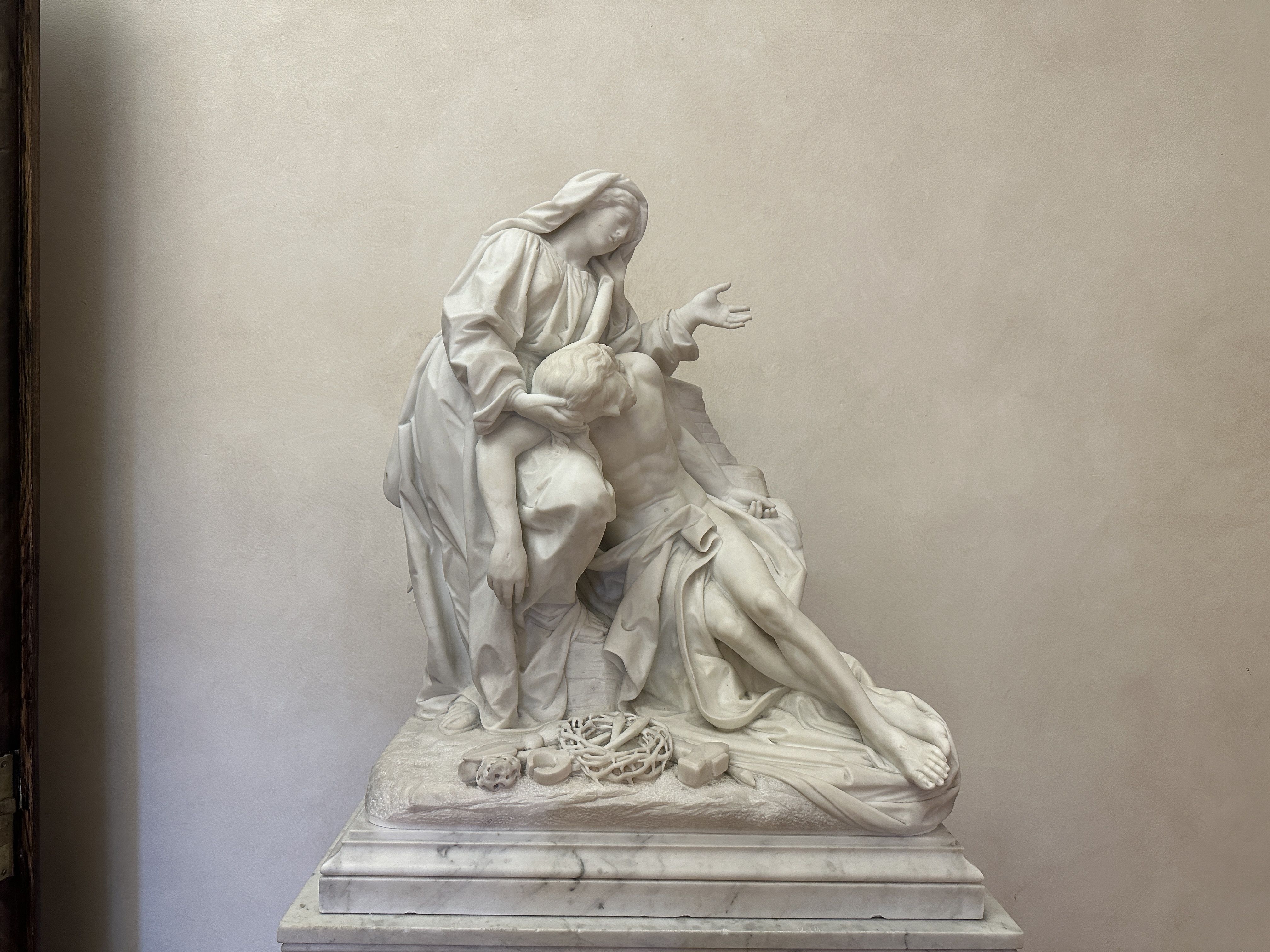Our Lady of Sorrows, the memorial we celebrate today, is one of those classic liturgical commemorations that has undergone development through the centuries. Devotion to the Seven Sorrows of Mary, not to be confused with the Sorrowful Mysteries of the Rosary, was popularized in the 13th century by the Servites, or the Order of the Servants of Mary; one of the 5 original medicant orders along with the Dominicans, Franciscans, Carmelites, and Augustinians. Around two hundred years later, the memorial of Our Lady of Sorrows was added to the liturgical calendar locally in Germany and eventually spread from there – Our Lady of Sorrows was officially declared Queen and Patroness of Poland by Pope St. Paul VI in 1967. Over the years, it was celebrated under different titles (e.g., Our Lady of Compassion) and on different days (e.g., the Friday before Palm Sunday or the third Sunday of September). Though Pope Benedict XIII placed the memorial on the universal liturgical calendar in the 18th century, it was not until 1913 that Pope St. Pius X fixed the day of celebration to September 15th. This day is most fitting.
It is most fitting because the day prior, September 14th, is the feast of the Exaltation of Holy Cross. Here, in the liturgical calendar itself, we are reminded that our Sorrowful Mother, with a sword piercing through her own soul (cf. Lk 2:35), stands ever-faithful by her Son. She is the perfect model of how to bear one’s own sorrows and disappointments, trials and difficulties; i.e., by drawing closer to her Son. In the great hymn which commemorates Mary’s presence at the foot of the Cross, the Stabat Mater – which one might hear at Mass today – we ask the Sorrowful Mother to intercede for us, to “make me feel as you have felt/ make my soul to glow and melt/ with the love of Christ, my Lord.”

The collect, or opening prayer, for the Mass on this memorial even alludes to this hymn: “O God, who willed that, when your Son was lifted high on the Cross, his Mother should stand close by and share in his suffering, grant that your Church, participating with the Virgin Mary in the Passion of Christ, may merit a share in his Resurrection.” According to tradition, the hymn was written by the 13th century Franciscan Jacopone da Todi, and musical settings were written by a number of prominent composers throughout the centuries; from Palestrina, Pergolesi, and Haydn to Schubert, Verdi, and – in our own day – James MacMillan.
The Cross, the great paradox of Christian redemption, which St. Paul called a stumbling block and foolishness for non-believers but the power of God and wisdom of God for believers (1 Cor 1:23-4), is at one and the same time a symbol of our burdens and the source of our strength. According to St. Paul, our Lord once told him: “‘My grace is sufficient for you, for my power is made perfect in weakness’” (2 Cor 12:9). In her embrace of the Cross, our Sorrowful Mother leads us to the source of our strength and salvation. We are not served well by avoiding, denying, or pretending that our trials and tribulations do not exist. Rather, in those moments of anxiety and fearfulness, we need to emulate our Sorrowful Mother and cling to Cross of Christ.

